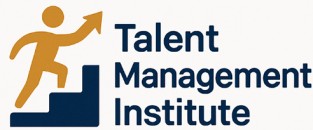
Understanding SaaS Payroll
The Evolution and Functionality of SaaS Payroll Systems
Understanding the core principles of SaaS payroll systems is essential in grasping their significance in modern business operations. Over recent years, software-as-a-service (SaaS) has redefined how companies handle payroll and workforce management. But what exactly is a SaaS payroll system? At its core, it is a cloud-based solution that simplifies payroll tasks by offering accessibility, scalability, and flexibility. Unlike traditional payroll software, SaaS systems operate over the internet. This web-based service allows businesses, whether small or large, to manage payroll tasks with ease. Users can access the payroll system anywhere, anytime, reducing the limitations imposed by location-based software. This aspect is particularly beneficial for companies with remote or geographically dispersed employees. ### Highlights of SaaS Payroll Systems- Cloud-based Operations: A significant feature is its cloud-based nature, allowing seamless access to payroll data anywhere with an internet connection.
- Automated Payroll Calculations: Automatic computation of payroll tax, deductions, and net pay enhances efficiency and reduces errors.
- Real-time Updates and Support: Companies can receive real-time updates regarding any changes in tax regulations, ensuring compliance and accuracy. Additionally, technical support is often provided as part of the service.
- Data Security: Security is a top priority with SaaS payroll solutions. The systems adopt stringent data security measures to safeguard sensitive employee and business information.
Benefits of SaaS Payroll for Talent Management
Streamlined Management and Improved Accessibility
SaaS payroll solutions offer significant benefits that redefine how businesses manage their payroll tasks. One of the primary advantages is the ease of access. Payroll data is hosted in the cloud, allowing management and employees to access the system anytime, anywhere. This web-based approach significantly enhances flexibility, enabling actions to be taken outside the traditional office environment.Cost Efficiency and Improved Scalability
For businesses of all sizes, from small enterprises to multinational corporations, cost management is a critical factor. SaaS payroll solutions provide a cost-effective alternative to traditional software systems. There's no need for extensive hardware or in-house IT support, which can lead to substantial savings. Additionally, as the business grows, the payroll system can easily scale to accommodate an increasing workforce without extensive investment.Integration with Other Management Systems
SaaS payroll systems can seamlessly integrate with existing HR platforms, enhancing overall workforce management efficiency. This integration ensures that data flows smoothly across systems, reducing errors and improving coherence in employee management. For instance, enhancing talent management with seamless Paycom and NetSuite integration demonstrates how intertwined systems can align payroll and HR operations, leading to better data coherence and operational efficiency.Security and Compliance Features
Data security is a paramount concern for payroll departments. SaaS payroll systems come equipped with robust security measures to protect sensitive information. Features like encryption and a comprehensive privacy policy ensure that payroll tax information and employee data are handled securely. Moreover, these solutions keep businesses compliant with tax regulations and other legal requirements, reducing the risk of costly penalties.Challenges in Implementing SaaS Payroll
Overcoming the Initial Challenges
Implementing SaaS solutions for payroll systems, although beneficial, can come with its own set of challenges. Understanding these hurdles is essential for businesses aiming to streamline their payroll operations efficiently. Firstly, data security is a major concern when transitioning to a cloud-based payroll solution. Ensuring the protection of sensitive employee information, payroll tax, and other critical payroll data demands a robust privacy policy and trusted service provider. Businesses must verify that their chosen SaaS solution offers comprehensive data security protocols to safeguard their information. Additionally, technical support is crucial during the transition period. Small businesses can often find themselves at a disadvantage without the necessary resources or knowledge to resolve technical issues swiftly. Therefore, assessing the level of support provided by the software service in terms of both initial setup and ongoing maintenance is a key consideration. Integration with existing HR systems can also be a daunting task. The process should be seamless to avoid disruption in daily operations. Aligning the SaaS payroll with existing workforce management tools requires a thorough assessment of compatibility and system performance. The culmination of these efforts will enable optimizing workforce efficiency with a labour management system. Moreover, while web-based payroll solutions provide accessibility, businesses need to ensure that all employees, especially those without advanced technical skills, can comfortably use the new system. Offering training and conducting regular audits can help mitigate user-related challenges. Lastly, understanding the common payroll tasks and ensuring comprehensive payroll forms and solutions are available can eliminate future complications. Developing a checklist of frequently asked questions and potential troubleshooting scenarios will better prepare businesses for any eventuality. In conclusion, while the path to adopting a SaaS payroll system comes with hurdles, being prepared with effective strategies and tools can facilitate a smoother implementation, positively impacting overall talent management and operational efficiency.Integrating SaaS Payroll with HR Systems
Harmonizing Payroll with HR Ecosystems
Integrating SaaS payroll solutions with existing HR systems can significantly bolster the efficiency and accuracy of human resource management. For businesses aiming to streamline payroll tasks, the synchronization of payroll software with HR platforms ensures a seamless flow of data across departments, reducing redundancies and manual errors.
When choosing a cloud-based payroll service, consider its compatibility with existing HR systems. Access to integrated payroll systems allows for efficient management of employee information, from payroll taxes to benefits and time-tracking. An integrated approach not only saves time but also supports data security by minimizing the risk of data breaches through reduced manual data entry.
Web-based payroll solutions enhance the accessibility of payroll tasks, enabling HR managers to handle payroll anywhere and anytime. This flexibility can be particularly advantageous for small businesses looking to optimize their workforce management without investing heavily in on-premise infrastructure.
Additionally, businesses must ensure that any payroll system they select aligns with their privacy policies and complies with local regulations related to payroll tax and data management. Leveraging case studies from similar industries can offer insights into best practices and potential pitfalls when integrating SaaS payroll solutions.
Ultimately, the integration of SaaS payroll systems with HR software services is not just about access but about creating a robust, efficient, and secure payroll solution that supports the overarching goals of talent management. Business SaaS platforms continue to evolve, and staying informed about future trends is crucial for sustaining successful payroll integration.
Case Studies: Successful SaaS Payroll Implementation
Real-World Examples of SaaS Payroll Success
Exploring real-world examples of successful SaaS payroll implementations can provide valuable insights into how businesses can effectively streamline their payroll processes. These case studies highlight the transformative impact of adopting cloud-based payroll solutions on talent management and overall business efficiency.
Case Study 1: Small Business Transformation
One small business, previously burdened by manual payroll tasks, turned to a SaaS payroll solution to enhance efficiency. The transition to a cloud-based system allowed for seamless integration with existing HR systems, reducing the time spent on payroll processing by 50%. This shift not only improved accuracy in payroll tax calculations but also freed up valuable time for the HR team to focus on strategic talent management initiatives.
Case Study 2: Enhancing Data Security and Compliance
A mid-sized company faced challenges with data security and compliance due to outdated payroll software. By adopting a SaaS payroll service, they gained access to advanced data security features and automated compliance with payroll tax regulations. The web-based platform ensured that sensitive employee data was protected, while the mobile app provided employees with easy access to their payroll information, enhancing overall employee satisfaction.
Case Study 3: Streamlining Payroll for a Distributed Workforce
For a business with a geographically dispersed workforce, managing payroll was a complex task. Implementing a SaaS payroll system provided a centralized solution that supported the diverse needs of their employees. The system's flexibility allowed for easy management of different payroll forms and tax requirements across various regions. This streamlined approach not only improved payroll accuracy but also strengthened the company's talent management strategy by ensuring timely and accurate compensation for all employees.
These case studies demonstrate the significant benefits of integrating SaaS payroll solutions into business operations. From enhancing data security to improving payroll accuracy and efficiency, these systems offer robust support for businesses aiming to optimize their talent management processes.
Future Trends in SaaS Payroll and Talent Management
Trends Shaping the Future of SaaS Payroll in Talent Management
The landscape of SaaS payroll systems is evolving rapidly, driven by technological advancements and changing business requirements. As organizations continue to adopt these payroll solutions, several trends are forecasted to significantly impact the future of talent management.- Increased Automation: With automation gaining traction, future payroll software will likely offer more sophisticated automated features, streamlining payroll tasks even further. This could enhance efficiency in businesses by reducing manual effort and errors.
- Data-Driven Decisions: More payroll systems are expected to integrate advanced analytics capabilities, allowing businesses to make informed decisions based on comprehensive payroll and workforce data. Leveraging insights from employee data and payroll metrics will enable organizations to optimize their talent management strategies.
- Mobile App Integration: The rise in remote work has highlighted the importance of mobile solutions. Payroll systems will increasingly offer mobile app access, providing employees with seamless service payroll capabilities and management on-the-go.
- Enhanced Data Security: As cyber threats continue to grow, SaaS payroll solutions will need to prioritize data security and privacy policies to protect sensitive payroll tax and employee information. This will build trust with businesses and their workforce.
- AI and Machine Learning Adoption: Future SaaS payroll solutions may incorporate AI and machine learning to deliver predictive insights and personalized employee experiences, further aligning payroll management with broader talent management objectives.
- Integration with Broader HR Systems: As integration challenges are addressed, SaaS payroll solutions are expected to more seamlessly connect with broader HR and business software service systems. This will foster a cohesive approach to talent management.



-large-teaser.webp)








